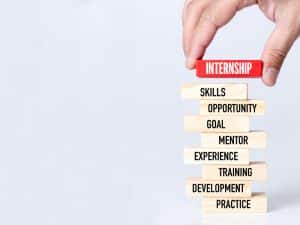The Best Tips for Transferring to an Ivy League School
Are you dreaming of transferring to an Ivy League school? In this ultimate guide, we will walk you through everything you need to know to make your dreams a reality. From understanding the Ivy League to preparing for the transfer, navigating the application process, and life after the transfer, this guide has got you covered.
Understanding the Ivy League
Before diving into the transfer process, it’s important to understand what makes the Ivy League schools unique. The Ivy League consists of eight prestigious institutions known for their rigorous academics, selective admissions, and rich history. These schools include Harvard University, Yale University, Princeton University, Columbia University, Cornell University, Brown University, Dartmouth College, and the University of Pennsylvania.
The Ivy League schools have a long-standing tradition of excellence in education and are considered some of the most prestigious institutions in the world. Each school has its own distinct culture and strengths, but they all share a commitment to academic excellence and intellectual growth.
One of the defining features of Ivy League schools is their rigorous academics. These institutions offer a wide range of majors and programs, allowing students to explore their interests and pursue their passions. The faculty at Ivy League schools are renowned experts in their fields, providing students with a world-class education and mentorship.
Another aspect that sets the Ivy League schools apart is their emphasis on critical thinking and intellectual curiosity. The small class sizes foster a close-knit community and allow for meaningful interactions with professors. Students are encouraged to engage in lively discussions, challenge conventional wisdom, and think critically about complex issues.
In addition to their academic rigor, the Ivy League schools boast extensive resources that enhance the learning experience. The libraries at these institutions are home to vast collections of books, journals, and digital resources, providing students with access to a wealth of knowledge. Research opportunities are abundant, allowing students to work alongside faculty on groundbreaking projects and contribute to the advancement of knowledge in their respective fields.
Furthermore, Ivy League schools have world-class facilities that support a wide range of activities and interests. From state-of-the-art laboratories and performance spaces to athletic facilities and art studios, these institutions provide students with the tools and spaces they need to excel in their chosen pursuits.
What Makes Ivy League Schools Unique
Ivy League schools are renowned for their academic excellence, faculty expertise, and emphasis on critical thinking and intellectual curiosity. The small class sizes foster a close-knit community and allow for meaningful interactions with professors. Moreover, Ivy League schools boast extensive resources, including libraries, research opportunities, and world-class facilities.
But what truly sets the Ivy League schools apart is the vibrant and diverse student body. These institutions attract some of the brightest and most talented students from around the world. The Ivy League experience is enriched by the diversity of perspectives and backgrounds that students bring to campus. Interacting with classmates from different cultures and walks of life broadens students’ horizons and prepares them to thrive in an increasingly globalized world.
Furthermore, attending an Ivy League school carries significant prestige and can open doors to various opportunities. Ivy League graduates often have a network of influential professionals and alumni connections, facilitating career advancement. The brand name of an Ivy League institution can also provide a competitive edge when applying to graduate programs or seeking employment.
However, it’s important to note that while an Ivy League education can provide a solid foundation for success, it is ultimately up to the individual student to make the most of their experience. Hard work, dedication, and a genuine passion for learning are essential ingredients for thriving in an Ivy League environment.
Preparing for the Transfer
Transferring to an Ivy League school requires careful planning and preparation. It’s important to focus on two key areas: academic requirements and extracurricular achievements.
When it comes to academic requirements, Ivy League schools have high standards that must be met. It’s not enough to simply have good grades; you need to excel in your coursework. This means putting in the time and effort to truly understand the material and perform at a high level. Maintaining a strong GPA is essential, but it’s also important to take challenging classes that push you to expand your knowledge and skills. Ivy League schools are looking for students who are intellectually curious and eager to learn, so consider engaging in independent research or projects that demonstrate your passion for your field of study. Additionally, don’t be afraid to explore subjects outside of your major. Ivy League schools value well-rounded students who have a broad range of knowledge and interests.
While academics play a vital role in the transfer process, Ivy League schools also value individuals who are well-rounded and have a diverse range of experiences. This is where extracurricular achievements come into play. Engaging in extracurricular activities that align with your interests not only shows your dedication and commitment, but also allows you to develop important skills such as leadership, teamwork, and community involvement. Consider joining clubs or organizations that are related to your field of study or personal interests. This will not only give you the opportunity to pursue your passions outside of the classroom but also allow you to connect with like-minded individuals who share your interests. Additionally, participating in volunteer work or taking on leadership roles in student organizations can further showcase your initiative and dedication.
Building a strong transfer application involves more than just meeting academic and extracurricular requirements. It’s about presenting yourself as a standout candidate who will contribute to the Ivy League community in a meaningful way. Take advantage of opportunities to engage with faculty members and seek mentorship. Building relationships with professors can not only provide you with valuable guidance and support but also open doors to research opportunities or internships. Pursuing these experiences will not only enhance your academic and professional development but also demonstrate your commitment to your field of study.
When it comes to crafting your personal statement, it’s important to make it compelling and unique. Use this opportunity to highlight your motivation for transferring to an Ivy League school and how you will contribute to the community. Reflect on your experiences, both inside and outside of the classroom, and discuss how they have shaped your goals and aspirations. Be authentic and genuine in your writing, and let your passion for learning and personal growth shine through. Remember, the personal statement is your chance to make a lasting impression on the admissions committee, so take the time to carefully craft your words and make them count.
The Transfer Process
Once you’ve prepared for the transfer, it’s essential to understand the transfer process itself.
Transferring to an Ivy League school is a significant step in your academic journey. It opens up a world of opportunities, both academically and personally. However, the transfer process can be complex and requires careful planning and preparation. In this expanded version, we will delve deeper into the various aspects of the transfer process, providing you with valuable insights and guidance.
When to Apply for Transfer
Timing is crucial when applying for a transfer. Research the specific deadlines for each Ivy League school and plan accordingly. Typically, transfer applications are due in the spring for admission in the following fall semester. However, it’s important to note that each school may have slight variations in its deadlines, so it’s essential to double-check the dates for each institution you are considering.
Applying early is always advisable. By completing all necessary paperwork and submitting your application well before the deadline, you maximize your chances of acceptance. It also allows you ample time to address any unforeseen issues that may arise during the application process.
Navigating the Application Process
The transfer application process can be intricate, with each Ivy League school having its unique requirements. Thoroughly researching the application materials and ensuring you understand the documentation needed is crucial for a successful application.
Start by familiarizing yourself with the application forms and instructions provided by each school. Pay close attention to the specific guidelines and requirements outlined by the institution. Some schools may require recommendation letters, transcripts, test scores, essays, and even interviews. Understanding these requirements will help you plan your application strategy effectively.
It’s also essential to keep track of deadlines for each component of the application. Create a timeline that allows you to gather all the necessary documents and complete any standardized tests required. By staying organized and proactive, you can ensure that your application is complete and submitted on time.
Writing a Compelling Transfer Essay
The transfer essay is your opportunity to showcase your strengths, aspirations, and reasons for wanting to transfer to an Ivy League school. It is a chance to convey your unique story and demonstrate how you would contribute to the academic and social fabric of the institution.
When writing your transfer essay, take the time to reflect on your experiences, goals, and how the Ivy League environment aligns with your ambitions. Be authentic, eloquent, and concise in your writing, highlighting what makes you a perfect fit for the institution. Use this essay as a platform to express your passion for learning, your intellectual curiosity, and your drive to make a difference in the world.
Consider seeking feedback from trusted mentors, teachers, or friends when crafting your transfer essay. Their insights and perspectives can provide valuable guidance and help you refine your message. Remember, a well-written and compelling essay can make a significant difference in the admissions process.
As you embark on the transfer process, remember to stay focused and determined. Transferring to an Ivy League school is a competitive endeavor, but with careful planning, thorough research, and a strong application, you can increase your chances of success. Good luck on your transfer journey!
Financial Considerations
While Ivy League education offers unparalleled opportunities, it’s crucial to consider the financial aspect of transferring. Making an informed decision about the costs involved can help you plan for your future and ensure that you are able to pursue your academic goals without undue financial burden.
When it comes to Ivy League schools, one of the first things that comes to mind is their high tuition costs. Familiarize yourself with the tuition and fees of each school to understand the financial commitment involved. Take the time to research and compare the costs of different Ivy League institutions, as they may vary significantly. It’s important to have a clear understanding of the financial investment you will be making.
Exploring various resources can help you gain a clearer understanding of the costs and potential options for funding your education. Financial aid calculators can be valuable tools in estimating your eligibility for need-based aid. These calculators take into account factors such as your family’s income, assets, and the cost of attending the Ivy League school of your choice. By inputting this information, you can get an estimate of the financial aid you may be eligible for, which can help you plan your finances accordingly.
In addition to need-based aid, Ivy League schools also offer scholarships and grants to help offset the costs of attending. These scholarships and financial aid opportunities are not limited to incoming freshmen; they are also available to transfer students. Research the scholarships and financial aid opportunities available specifically for transfer students. Many Ivy League schools have dedicated programs and resources to support transfer students financially. By taking advantage of these opportunities, you can potentially reduce the financial burden of attending an Ivy League school.
It’s important to note that financial aid applications for transfer students may have different deadlines and requirements compared to those for incoming freshmen. Make sure to submit the necessary financial aid applications on time and gather all the required documentation. This will ensure that you are considered for all the financial aid options available to you.
Additionally, don’t limit yourself to just the scholarships and financial aid offered by the Ivy League schools themselves. Explore external scholarships or grants that may be available to transfer students. There are many organizations and foundations that offer scholarships specifically for transfer students, and these can be a valuable source of funding.
By thoroughly researching and understanding the financial aspects of transferring to an Ivy League school, you can make an informed decision about your education. Take the time to explore the various resources available to you, including financial aid calculators, scholarships, and grants. With careful planning and consideration, you can navigate the financial challenges and pursue your academic goals at an Ivy League institution.
Life After the Transfer
Once you transfer to an Ivy League school, it’s important to adjust to the new environment and make the most of your experience.
Adjusting to Ivy League Culture
Ivy League schools have their unique culture and expectations. Take advantage of orientation programs, mentorship opportunities, and campus resources to ease your transition and adapt to the academic and social atmosphere. Seek support from classmates, professors, and campus organizations to ensure a smooth adjustment.
Maximizing Your Ivy League Experience
An Ivy League education offers a wealth of opportunities beyond the classroom. Engage in research projects, internships, study abroad programs, and networking events. Take advantage of the extensive alumni network to connect with professionals in your field of interest. Actively participate in clubs, organizations, and campus events to expand your horizons and build lasting relationships.
Career Opportunities After Graduation
After graduation, the Ivy League brand name can significantly enhance your career prospects. Leverage the career services available at your Ivy League institution to explore internships, job opportunities, and graduate school options. Network with alumni and professionals to gain insights, mentorship, and potential job leads. The skills and experiences gained during your Ivy League education will set you on a path to success.
In conclusion, transferring to an Ivy League school requires meticulous planning, preparation, and effort. Understanding the unique aspects of the Ivy League, meeting academic and extracurricular requirements, navigating the transfer process, considering financial implications, and maximizing your experience are crucial steps to achieving your goal. As you embark on this journey, remember that perseverance and a dedication to personal and intellectual growth will pave the way for a rewarding and transformative Ivy League education.










































